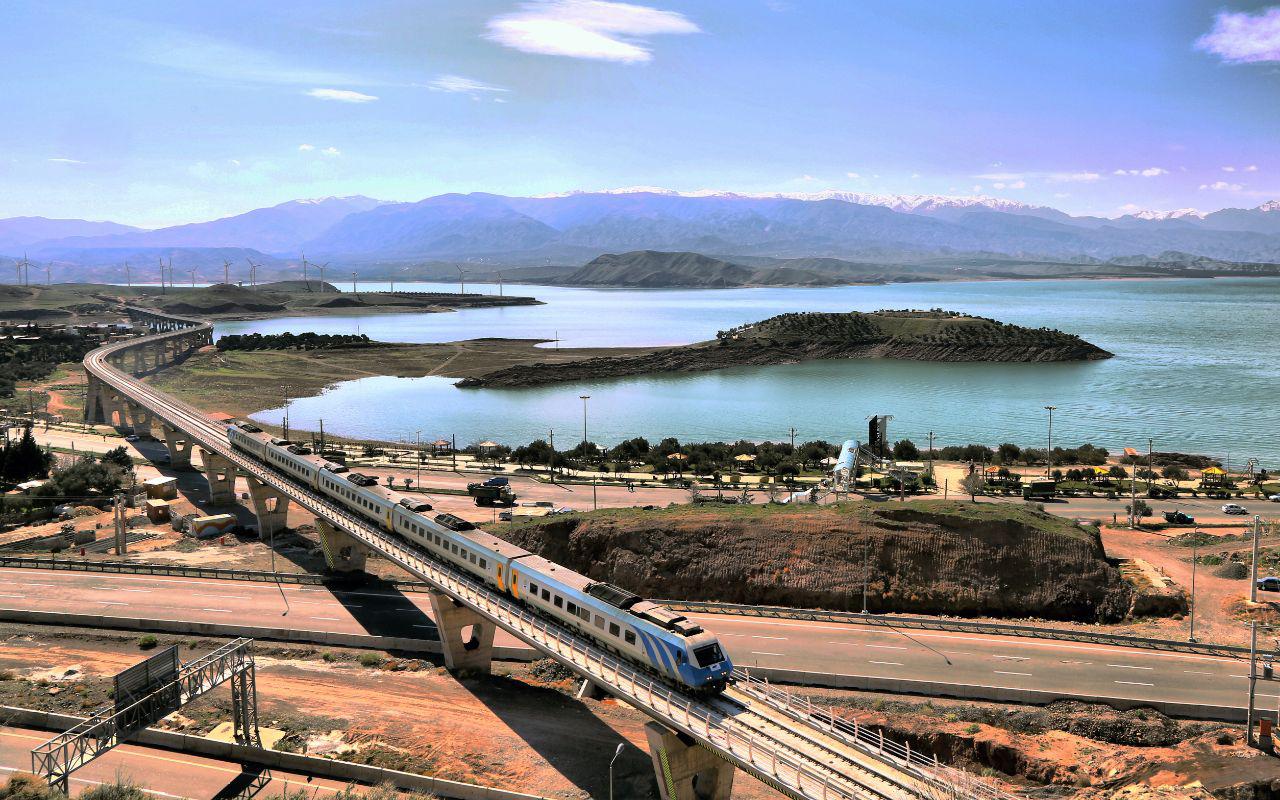The long-awaited Qazvin-Rasht railroad project was officially inaugurated by the Iranian President Hassan Rouhani on Wednesday in the northern city of Rasht, Gilan Province.
A train was flagged off by the president from the northern city for the holy city of Mashhad in Khorasan Razavi Province.
This rail route was one of the main missing links along the International North-South Transport Corridor.
With the new railway coming on stream, Gilan will be Iran’s 22nd province that enjoys connectivity to the national railway network.
The construction of Qazvin-Rasht railroad began in the Iranian year 1385 (fiscal 2005-2006).
A rail route connecting Rasht to Astara on the border with Azerbaijan is another missing link along the INSTC.
Some 18.5 trillion rials (more than $145.1 million) have been spent on this 164-kilometer-long project, 13 trillion rials (close to $102 million) of which during the first and second terms of President Hassan Rouhani, IRNA reported.
With the new railway coming on stream, Gilan will be Iran’s 22nd province that enjoys connectivity to the national railway network
The newly-inaugurated railway has the capacity to transport 1.4 million passengers and around 5.1 million tons of cargos in the first year.
Plans are to increase these figures to 2.8 million passengers and 7 million tons in a 20-year vision plan.
According to Minister of Roads and Urban Development Mohammad Eslami, passenger and cargo trains can speed up to 160 kilometers per hour and 120 km/ph respectively on this route, which has 53 tunnels and 45 bridges along the way, collectively stretching for 22 kilometers and 8.4 kilometers respectively.
Nine train stations have been built along Qazvin-Rasht with a total area of 39,455 square meters.
More than 22 million cubic meters of earthwork including 12 million cubic meters of embankment and 10 million cubic meters of excavation have been carried out for this project, more than 40% of which have been constructed on mountainous regions.
Saving on Time, Cost
According to Head of Construction and Development of Transportation Infrastructure Company of Iran, Kheirollah Khademi, the inauguration of Qazvin-Rasht will cut cargo transportation time from India to the Suez Canal from 36 days to 18 days, and reduces costs by around 35%.
Since the INSTC rail route has yet to be completed for full operationalization, multi-modal transportation will be used (by road and sea as well as rail) until the missing links come on stream.
“The contractors, engineers and construction workers in this project were all Iranians from the beginning to the end,” he was quoted by the news portal of the Ministry of Roads and Urban Development as saying.
Abbas Khatibi, deputy head of Construction and Development of Transportation Infrastructure Company of Iran says transportation of cargo and passengers via Qazvin-Rasht railway will save up to 20 million liters of fuel per year.
“Moreover, it reduces air pollution and saves up to 157 billion rials ($1.23 million) every year. Using this rail route will reduce road accidents and save around 352 ($2.76 million) billion rials annually. The project will create around 165 jobs.” he was quoted by ILNA as saying.
INSTC is a major transit route designed to facilitate the transportation of goods from Mumbai in India to Helsinki in Finland, using Iranian ports and railroads, which the Islamic Republic plans to connect to those of Azerbaijan and Russia.The corridor will connect Iran with Russia’s Baltic ports and give Russia rail connectivity to both the Persian Gulf and the Indian rail network.


